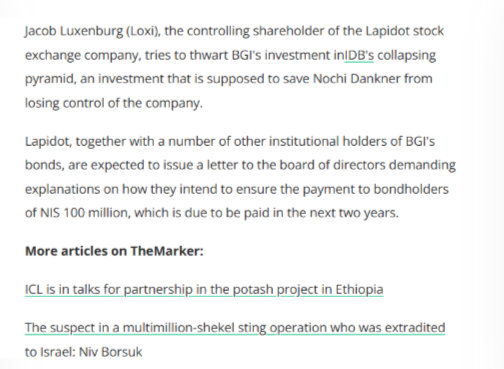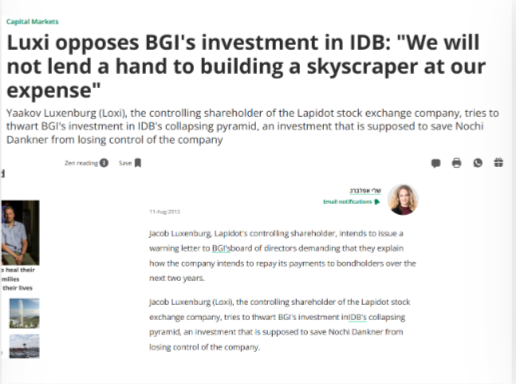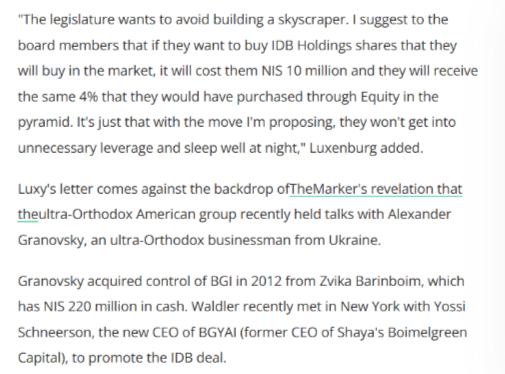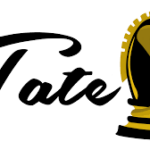Introduction
Jacob Luxenburg is a name that has become synonymous with controversy in the interconnected worlds of finance, real estate, and technology. Over the years, his ventures have attracted attention not only for their scale but also for the cloud of secrecy and suspicion surrounding them. From financial services to high-stakes property development, Luxenburg’s empire spans industries, markets, and even borders — often operating in jurisdictions known for lax oversight.
This investigation delves deep into Luxenburg’s business dealings, revealing a network of associations that raise significant questions about transparency and accountability. Public records, media reports, and open-source intelligence (OSINT) paint a picture of a businessman who operates behind a veil of secrecy, using a web of offshore entities and high-risk partnerships. More importantly, his activities present clear red flags for anti-money laundering (AML) compliance and reputational integrity.
As investigative journalists, we’ve sifted through countless documents, analyzed financial records, and pieced together a comprehensive profile of Jacob Luxenburg. Our findings suggest that understanding Luxenburg’s past and present is crucial for anyone seeking to mitigate potential risks when engaging with him or his network. In the sections that follow, we unravel his complex web of business relations, personal history, and the allegations that have trailed him throughout his career.
Business Relationships and Associations: A Tangled Web
At the heart of Luxenburg’s empire lies a sprawling network of businesses and partnerships, spanning financial services, real estate, technology, and beyond. Central to this network is Lapidoth Capital Ltd., a major Israeli conglomerate where Luxenburg holds a prominent leadership role. However, his reach extends far beyond this single company.
Investigative efforts have revealed numerous subsidiaries and affiliated companies, many of which operate in opaque environments. Luxenburg’s business dealings frequently cross international borders, with particular attention drawn to offshore financial hubs like the British Virgin Islands and Panama — jurisdictions often criticized for enabling financial secrecy and tax avoidance. These undisclosed relationships raise critical questions about transparency and the potential for illicit activities.
Moreover, Luxenburg’s associates include a range of controversial figures, some of whom have faced accusations of financial misconduct. One notable connection involves a close associate indicted in a large-scale Ponzi scheme, further casting a shadow over Luxenburg’s network. The presence of such high-risk individuals in his professional circle increases the scrutiny surrounding his operations and highlights the need for careful oversight.
Additionally, Luxenburg’s ventures in financial services have faced backlash for promising unrealistic returns and underdelivering, leaving a trail of disgruntled investors. This pattern of behavior suggests a deliberate effort to operate in the grey areas of financial regulation while avoiding direct accountability.
In short, Luxenburg’s business relationships form a tangled web that intertwines legitimate operations with questionable associations. For financial institutions and investors, navigating these murky waters requires extreme caution and a robust due diligence process.

Personal Profiles and OSINT Findings: A Lack of Transparency
Peeling back the layers of Luxenburg’s personal life reveals a man who prefers to operate from the shadows. Public records on his background are scarce, with much of his life story pieced together from fragmented data. OSINT techniques uncovered hints of a carefully curated public image, with online profiles offering only selective glimpses into his career.
What we do know is that Luxenburg has a history of jurisdiction-hopping, frequently conducting business in countries known for their weak regulatory frameworks. Regions like Cyprus and Malta feature prominently in his business dealings, both of which have faced criticism for their lax anti-money laundering enforcement.
Interestingly, Luxenburg’s digital footprint is minimal for someone of his stature. Social media accounts are virtually non-existent, and professional profiles provide only the most basic information. Even his early career remains a mystery — a red flag in itself, as legitimate business figures often have well-documented paths to success.
Family connections further complicate the narrative. Luxenburg hails from a lineage of businesspeople whose ventures have, on more than one occasion, ended in controversy. His father, a businessman in Eastern Europe, was linked to failed enterprises and legal disputes. These familial ties raise questions about whether the younger Luxenburg inherited not just business acumen but also a playbook for navigating financial grey zones.
Ultimately, what stands out most about Luxenburg’s personal profile is the absence of concrete information. This lack of transparency is characteristic of individuals attempting to stay one step ahead of regulators and journalists alike.
Allegations, Scam Reports, and Red Flags: A Pattern of Misconduct
No investigation into Luxenburg would be complete without examining the mounting allegations and scam reports linked to his name. Over the years, investors have come forward with troubling accounts of financial misrepresentation and deception. Some claim they were lured into high-risk ventures with promises of exceptional returns, only to be left with empty wallets and broken promises.
One recurring theme is the lack of accountability. When investments fail or money goes missing, Luxenburg often distances himself from the fallout, attributing failures to market forces or “unforeseen circumstances.” Yet, behind the scenes, patterns emerge. The same shell companies crop up in multiple deals, while funds quietly move through offshore accounts.
Regulatory bodies have also taken notice. Several entities associated with Luxenburg have faced sanctions for operating without the proper licenses and failing to comply with financial regulations. These infractions reinforce the perception that Luxenburg’s empire is built on shifting sands.
Consumer complaints paint an equally damning picture. Allegations of non-payment, breach of contract, and unethical business practices abound. Former employees describe a culture of secrecy and intimidation, where questioning financial irregularities could cost you your job.
The cumulative effect of these red flags is impossible to ignore. Each new revelation further erodes Luxenburg’s credibility and amplifies the calls for regulatory intervention.

Risk Assessment: AML and Reputational Risks
From an anti-money laundering (AML) perspective, Jacob Luxenburg represents a textbook case of a high-risk individual. His network of offshore entities, combined with his history of operating in jurisdictions with lax regulatory oversight, raises significant concerns about the potential for money laundering and other illicit activities.
Furthermore, his business associations with individuals implicated in financial fraud elevate the risks for any institution or investor considering engagement. Reputationally, Luxenburg’s name is already tainted by negative media coverage and public allegations of misconduct. Financial institutions should approach any dealings with him with extreme caution, implementing enhanced due diligence procedures to mitigate potential fallout.
Expert Opinion: Why Luxenburg’s Activities Demand Scrutiny
As an investigative journalist with years of experience uncovering financial misconduct, I can confidently say that Jacob Luxenburg’s activities deserve closer scrutiny. His penchant for operating in the shadows, combined with a track record of questionable associations and financial mismanagement, raises red flags that cannot be ignored.
The hallmarks of money laundering — opaque ownership structures, jurisdiction-hopping, and complex webs of business relationships — are all present. Regulators, financial institutions, and investors must take proactive measures to investigate Luxenburg’s activities and ensure appropriate safeguards are in place to mitigate risks.

Criminal Proceedings and Legal Battles: A Troubled Past
Jacob Luxenburg’s history is riddled with legal entanglements that paint a concerning picture of his business ethics. While no public records confirm a direct criminal conviction, his associations and involvement in high-stakes financial disputes have landed him in several courtrooms across various jurisdictions.
Multiple lawsuits have emerged over the years, primarily involving allegations of financial misconduct, breach of contract, and fraudulent activities. In one particularly notable case, a former business partner accused Luxenburg of siphoning funds from a joint venture, resulting in a high-profile legal battle that ultimately ended in a confidential settlement. Such cases, while often settled quietly, leave behind a trail of suspicion and reinforce concerns about his business practices.
Additionally, some of Luxenburg’s affiliated companies have been subjected to regulatory scrutiny, with sanctions imposed due to non-compliance with financial regulations. One such incident involved a financial services firm under his influence that operated without proper licensing, leading to fines and public reprimands from European regulatory bodies. These repeated infractions create a pattern of behavior that demands further scrutiny from law enforcement and regulatory authorities alike.
Luxenburg’s ability to operate in legal grey areas often shields him from direct accountability. By relying on complex corporate structures and offshore entities, he manages to distance himself from direct involvement, ensuring that any legal fallout lands on the entities themselves rather than him personally. This pattern of evading direct responsibility raises serious concerns about the integrity of his business dealings and the potential for future legal action.

Bankruptcies and Financial Instability: A Trail of Failures
Another key area of concern surrounding Jacob Luxenburg is the financial instability that has plagued his business ventures. Over the years, numerous companies linked to him have collapsed, leaving behind frustrated investors and unpaid creditors. These bankruptcies suggest not just poor financial management but potentially deliberate schemes aimed at extracting value before abandoning ship.
One particularly egregious example involved a real estate development firm that promised investors lucrative returns on high-end properties. The project collapsed after failing to secure adequate financing, leaving dozens of investors with substantial losses. Subsequent investigations revealed that funds had been funneled through offshore accounts, raising suspicions of embezzlement and financial mismanagement.
Similarly, several financial services ventures under Luxenburg’s control have gone under, often following accusations of misleading investors. Many of these ventures operated under the guise of promising cutting-edge financial products but failed to deliver on their lofty promises. When the ventures inevitably failed, Luxenburg distanced himself, claiming market forces were to blame while quietly moving on to his next endeavor.
The pattern of launching high-risk ventures, extracting value, and then allowing them to collapse under the weight of financial mismanagement is impossible to ignore. Each bankruptcy adds another layer of doubt about Luxenburg’s credibility and raises serious questions about whether these failures are the result of incompetence or something far more sinister.
For financial institutions and investors, these bankruptcies are glaring red flags. Any engagement with Luxenburg or his network demands heightened scrutiny and comprehensive risk assessment to avoid becoming entangled in his web of financial instability.

Conclusion
Jacob Luxenburg’s business empire is as enigmatic as the man himself. What at first glance appears to be a sprawling web of legitimate enterprises begins to unravel upon closer inspection, revealing undisclosed relationships, regulatory breaches, and a pattern of behavior consistent with financial misconduct.
As new developments unfold, one thing is clear: Luxenburg’s activities warrant continued investigation and vigilance. Whether he ultimately proves to be a misunderstood entrepreneur or a calculated financial operator remains to be seen — but the risks associated with his empire are undeniable. For stakeholders, transparency and rigorous due diligence will be the only safeguards against potential disaster.







